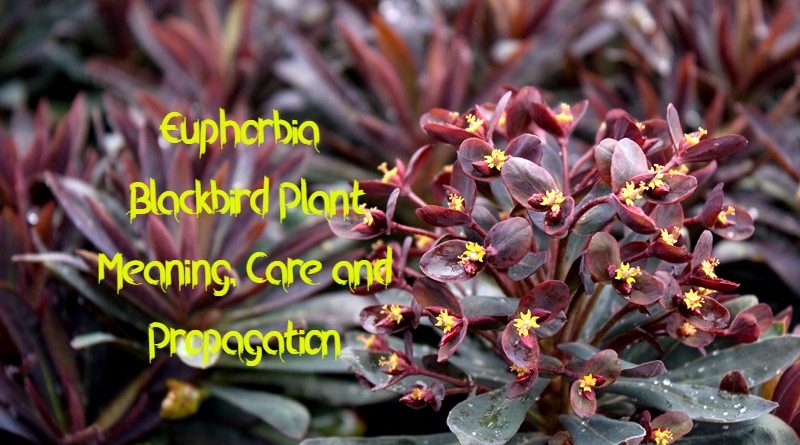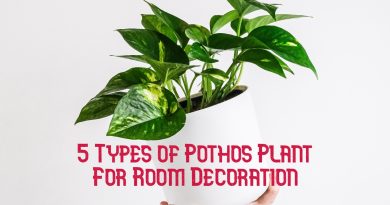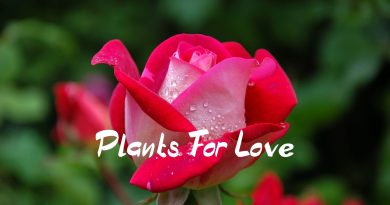Euphorbia Blackbird Plant: Meaning, Care and Propagation
The Euphorbia plant, also referred to as the Blackbird plant or Spurge, is a highly valued ornamental shrub known for its compact, bushy growth and striking dark purple foliage. As a perennial succulent, it is well adapted to the harsh conditions of the deserts in Southern Africa and Madagascar. This plant is part of the Euphorbiaceae family and is a member of the large and diverse genus of flowering plants known as Euphorbia. With its unique beauty and low maintenance requirements, the Euphorbia blackbird plant is a popular choice for gardeners and landscapers.
The Euphorbia plant is prized for its abundant blooms, which appear in a vibrant lime green color from mid-winter through spring. Its compact and tidy growth habit, reaching a height of 40cm and width of 50cm, makes it an ideal choice for smaller gardens or as a border plant in larger landscapes. This attractive shrub adds a touch of color and interest to any outdoor space, making it a sought-after addition to any plant collection.
Symbolic Meaning
In addition to its ornamental value, the Euphorbia plant is also revered for its symbolic significance in many cultures. In many parts of the world, it is considered a symbol of purity, protection, and wisdom. During the Christmas season, the Euphorbia plant is often displayed and is seen as a symbol of cheerfulness, family reunion, happiness, and good luck. With its bright and vibrant blooms, the Euphorbia plant is believed to bring wishes of mirth and celebration, and is often associated with good cheer and success. Whether grown for its beauty or its symbolic value, the Euphorbia plant is a valued and cherished part of many gardens and landscapes.
Care
Here are some general care tips for growing euphorbia:
1. Light: Most euphorbia species prefer bright, indirect light, but some can tolerate full sun. Avoid direct sun exposure, as it can scorch the leaves.
2. Water: Euphorbia plants prefer well-draining soil and do not like to be waterlogged. Water your plant when the top inch of soil is dry, and be sure to let the soil dry out between waterings.
3. Soil: Euphorbia plants prefer a well-draining, sandy soil mix. If your soil is heavy or clay-like, consider adding perlite or sand to improve the drainage.
4. Fertilizer: Euphorbia plants do not require regular fertilizer, but you can feed them every two to three months during the growing season with a balanced, all-purpose fertilizer.
5. Pruning: Prune euphorbia plants regularly to maintain their shape and size. Pruning also encourages healthy new growth and can help prevent diseases from spreading.
6. Temperature: Euphorbia plants prefer temperatures between 60 to 90 degree Fahrenheit.
Propagation
To propagate Euphorbias, stem cuttings are usually the preferred method as the seeds can be difficult to germinate and find. Here’s how to do it:
1. Obtain a three-inch long tip cutting using a clean, sharp knife. Note that the cut stem may ooze a milky sap which can irritate the skin, so it’s recommended to wear gloves.
2. Allow the cutting to dry and develop a callous over it for at least one night or up to a couple of days, which will increase your chances of success.
3. Fill a four-inch pot with seed-starting mix or cactus potting mix and water it until it is evenly moist.
4. Apply rooting hormone to the cutting and insert it into the soil, making sure it is at least 1/3 of an inch deep.
5. Keep the growing medium moist as the cutting develops roots. You’ll know it’s ready to be planted in a larger container or garden bed when you feel resistance when gently tugging on the stem.
Common Problems With Euphoria Blackbird Plant
To keep Euphorbias healthy, it’s important to be mindful of some common issues they may face. These include:
1. Powdery mildew on the leaves and flowers, which can affect the appearance of the plant.
2. Aphids, which can cause distortion to the leaves and stems, making the plant less attractive.
3. Root rot, which is a problem if the plant is grown in soils that are consistently wet.
4. Rust diseases, which can occasionally cause issues for Euphorbias.
By keeping an eye out for these potential problems and taking appropriate action, you can help keep your Euphorbias healthy and thriving.
Toxicity and Safety tips
It is important to note that Euphorbia plants can be toxic to some individuals, especially those with latex allergies. The milky, white sap produced by these plants is a major component in the production of latex products and can cause severe allergic reactions in those with latex sensitivities. The sap can also be an irritant to the skin, eyes, and digestive system, even in those without a latex allergy. When handling Euphorbia Blackbird Plant, it is essential to wear gloves to protect the skin and avoid touching your eyes. If the sap comes into contact with the skin, it should be washed off immediately. Additionally, Euphorbia plants should be kept out of reach of children and pets as ingesting the sap can cause digestive issues.
Final Words
If you’re searching for a versatile and abundant succulent plant, then look no further than the Euphorbia. This species boasts a vast array of options, with an innumerable number of color variations, shapes, sizes, and unique features to choose from. Furthermore, Euphorbias are incredibly sturdy and can endure even the harshest of droughts. With a touch of care and attention, your Euphorbia collection is guaranteed to flourish and flourish.
Enjoy Planting!!
Read Also:
Pothos Plant Meaning : Good Luck, Prosperity, and Harmony
Lady Valentine Plant: Symbolism, Propagation and Health Benefits
Heart Shaped Plants For Valentine’s Gift




